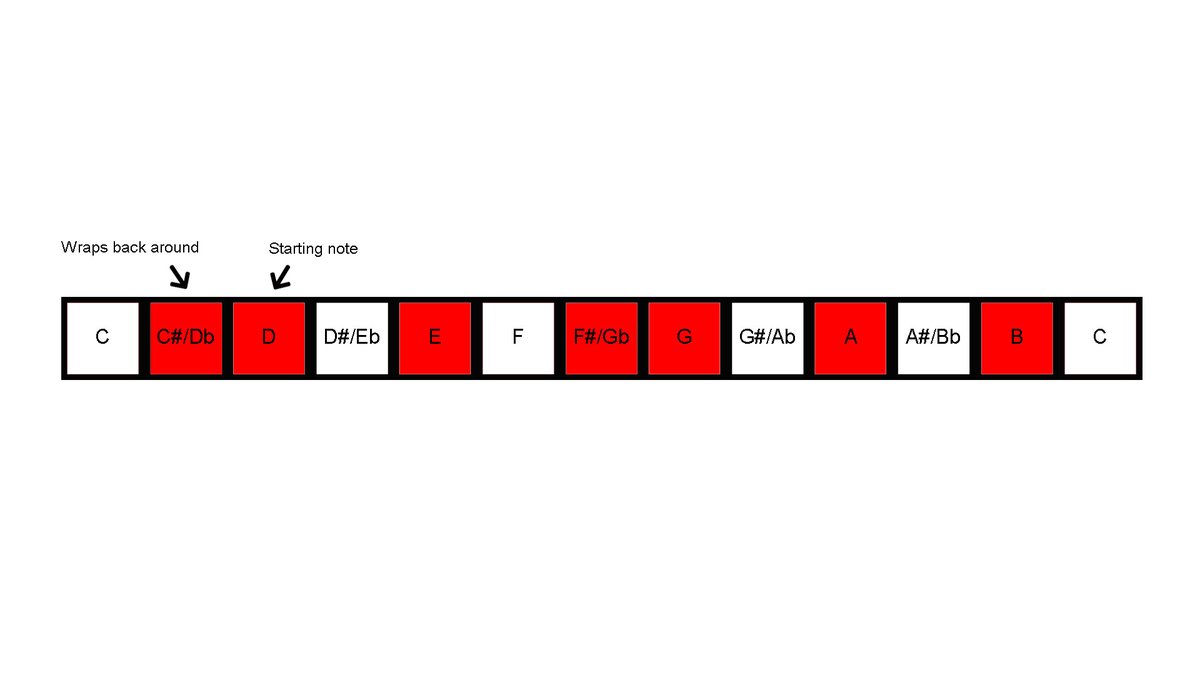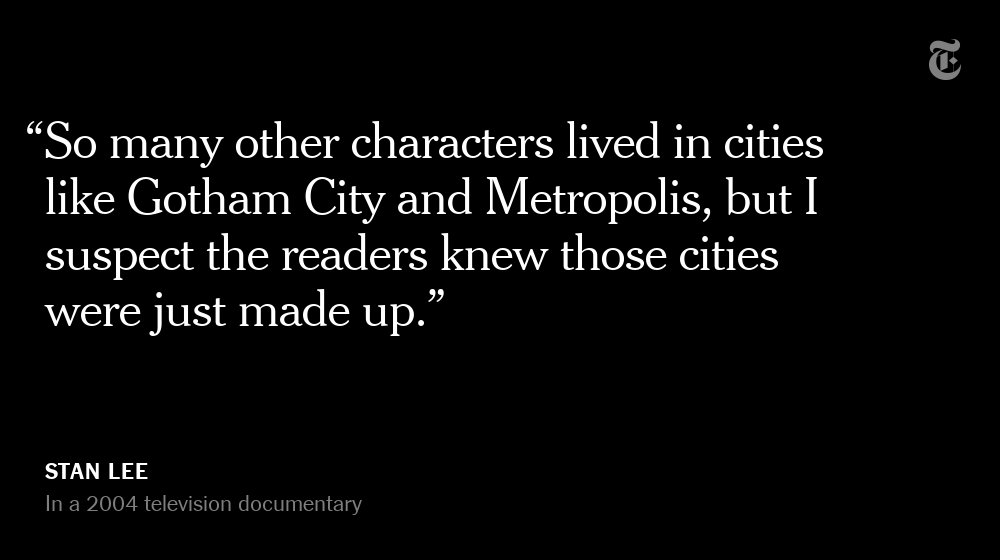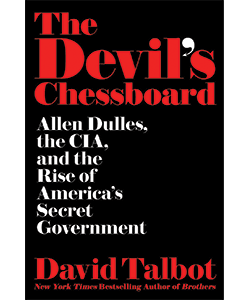All sound has only two dimensions: amplitude and frequency.
If a sound is oscillating with a specific discernible frequency, then it will have a discernible pitch, and we call that a note.
The higher the frequency, the higher the pitch of the note.
Individual notes alone have no emotional content, and therefore aren’t music. You aren’t moved to tears by your microwave beeping.
Similarly, you won’t feel anything if you play just a single note on the piano.
It’s only when you get two notes of different pitch played simultaneously that an emergent emotional quality starts to arise.
There will be a mathematical relationship between the frequencies of the note. We that relationship an interval.
Intervals are the emotional phonemes of music — the smallest building blocks that have emotional content.
The most pleasing intervals tend to have the simplest mathematical ratios.
If one note has a frequency of 440 Hz, and you play another with a frequency of 660 Hz, they have a ratio of 3/2.
This interval will be called a “fifth” (I’ll explain where that name comes from soon), and it sounds very good.
A ratio of 91/67 is going to sound very dissonant.
If you double the frequency of a note — 440 to 880 — it effectively becomes the same note again. Thus, the range of possible intervals with unique emotional qualities is one doubling.
We call that range an “octave” (again, more on names soon — they are the most confusing part).
Within a single octave, there are 12 intervals that are emotionally satisfying and different enough to be considered unique.
This means that there are effectively 12 pitches that we can use. Remember, pitch is arbitrary but intervals are not.
So there are really only 12 pitches in music, and they repeat infinitely upwards and downwards.
This is the foundation of western music.
A chessboard of only 12 notes, millions of ways to combine them
If we try to use all 12 notes in a song though, it’s going to be a mess. There will be too much dissonance, too much noise.
So what we can do is choose some of the notes to use, and set aside the rest, like a painter constructing a pallet.
This is called a scale.
There’s a specific scale that has become the most popular of all time: the major scale.
To construct it, you start with one note (it doesn’t matter which), then add notes in the following pattern: skip, add, skip, add, add, skip, skip, skip, add.
When we do this, we end up with 7 notes that are chosen, and 5 notes left out.
It's important to understand that the specific notes don't matter. It's the relationship between the notes.
As long as the pattern remains the same, it will be the major scale.
Why is this the most popular scale? It just sounds the best. Simple as that.
And this is really where traditional music theory begins. The major scale has been such an institution for so long, all of music nomenclature is based off it.
So now some important terms:
A "half" step is the distance between one note and the note right next to it. It's the smallest pitch change we have in western music.
A "whole" step is two half steps.
"Diatonic" means deriving from the major scale.
So the major scale pattern above is usually articulated: whole, whole, half, whole, whole, whole, half.
A scale functions as the emotional world in which a piece of music will be built.
It's similar to the setting in a movie. It doesn't tell you what's going to happen, it's just the tonal pallet from which you're drawing.
It would be weird for laser guns to show up in a western
The starting note is the only thing that's arbitrary, so we talk about the whole thing in terms of the starting note.
We call this a "key".
If I'm in the key of C major, it just means I've built the major scale starting on the note of C.
Now here's where the nomenclature system gets weird:
Letter names are given to the mathematical pitch frequencies (the notes), but not all 12.
Only 7 have names.
Can you guess why only 7?
That's right, the major scale.
The names of the notes in music derive from the C major scale.
Why C?
Dumb historical reasons (that's the answer to all questions about music theory nomenclature, by the way).
So if we start that pattern on C and assign letter names to the corresponding notes, we get: C, D, E, F, G, A, B (after that it goes back to C and repeats forever).
Those are all of the named notes in music.
But remember, there are 5 notes in between those that got left out.
We refer to those other five in relationship to the notes they are near.
"Sharp" (#) means above.
"Flat" (♭) means below.
So the note in between C and D could be called either C# or D♭.
Yes it literally has two names.
Which one we prefer to use depends on the context
I want to point out that the names refer to the frequencies, which are fixed.
So if we switch to a different key, we'll get the same pattern, but it will fall on different notes.
Here's an example of the D major scale:
Remember that it keeps going infinitely in each direction.
So what really makes it the key of D major versus the key of C major is the notes it contains.
D major always and forever contains exactly these notes:
D, E, F#, G, A, B, C#
But this dumb naming system causes a problem: it's specific to key, but key is arbitrary.
So do we replace the whole thing with something more elegant?
No! We patch another module on top!
So we have another, coinciding naming system which is key-agnostic.
The first note in a key is called the one. The second note is called the two, and so on.
So if we're in the key of D major, A is the five. But if we're in the key of C major, A is the six.
This is important because it's the INTERVAL which is important, not the note.
If we play the one and the five at the same time, that interval is called a "fifth".
A fifth sounds the same regardless of what key you play it in.
A fifth in C is C and G.
A fifth in D is D and A.
Both sound like fifths. You won't be able to tell them apart.
Fifth refers to the distance between the notes, not the specific notes. A fifth is precisely 7 half steps.
So there are multiple fifths you can play within one key. In the key of C major, C and G are a fifth.
But so are D and A.
See why I hate the nomenclature?
The same interval can be found in multiple keys.
The fifth of "D and A" occurs naturally in the key of C major and in the key of D major, because both contain the notes D and A.
So if you play only those two notes, and nothing else, it's impossible to tell what key you're in.
One of the biggest hurdles to mastering music theory is memorizing what notes are in what key.
But far important is the developing a mapping in your head of the emotional qualities of each interval.
You want to memorize what a fifth sounds like. It has a certain feel.
This is the core of making music: combining intervals. You need to know what the intervals individually feel like so you can predict how certain combinations will feel.
Here's your interval emotional cheat sheet:
Minor second (also called a half step): the most dissonant interval. Feels darks. The notes wobble against each other. Feel like they're fighting.
Major second (also called a whole step): more consonant, but still not very
Minor third: the saddest interval, dark and moody, consonant
Major third: happy and bright, consonant
Fourth: stable, not very emotionally charged, grey, consonant
Tritone: the "devil's interval", historically banned (yes really), very dissonant, sounds evil
Fifth: Like fourths, but more everything
Minor sixth: Like minor thirds, but wider
Major sixth: Like major thirds, but wider
Minor seventh: Crunchy, sassy, the foundation of blues and jazz
Major seventh: Dissonant in a good way, good pain
You can hear them all here:
https://t.co/7etQETaj6v At first you will scream, throw something at the computer, and say there is no difference between them.
But over time you will develop emotional connections with each.
Which interval is the most important?
Thirds.
We use them to build chords. In the key of C major, if we start on the root note and then add the 3 note (E), it will be a major 3rd.
If we go up another third after that, it will take us to G.
That's: C, G, E.
If we play those notes simultaneously, we get a C major triad.
Notice that the second third we added was a minor third.
This is the way it naturally happens when we are in C major, start on E, and count up: E, F, G.
G is the third note if we call E a temporary 1.
But also notice that the distance between C and G is a fifth.
So you can conceive of the chord as stacked thirds, or as 1, 3, 5.
Yes, this is confusing.
But this is hardest part.
Here's the takeaway: basic chords consist of the 1, 3, and 5 starting on a given note.
We started that chord on the first note of the C major scale. But we can also start another chord on the second note.
If we stay confined to the key, the first third ends up being minor, and the second one ends up being major.
This gives us a D minor chord.
Notice how the fifth interval stayed the same. The difference between the two was really the middle note. In the first, it was a major 3rd. In the second it was a minor 3rd.
That's what gives the chord the name "major" or "minor".
It also determines its emotional quality.
Major chords sound happy and minor chords sound sad.
You can a C major chord, or a C minor chord. But only one of them occurs naturally in the key of C major. If you wanted to make a C minor chord, that would require an Eb, which is not found in that key.
We can construct a chord starting on each of the notes in a key. When you do that, you get 7 chords. We name these chords.
And yes, we do it in a confusing way.
The chord starting on the 1 note is called the 1 chord, 2 chord starts on the 2 note, and so on.
When you do that, you get 3 chords that are major and three that are minor (caps are major, lowercase is minor):
I ii iii IV V vi viiø
The seven chord is weird because it's the only one where the five is not perfect -- it's flatted (lowered by a half step).
Every key has this pattern.
In every major key, the 1 chord is major, the 6 chord is minor, etc.
So you'll commonly musicians say "go to the 4 chord next!" and everybody knows that because they're in the key of C, the four chord is F major.
Here are some chord progressions of famous songs:
Let It Be: I V vi IV
Counting Stars: vi I V IV
Sweet Home Alabama: I IV V
Rolling In The Deep: vi iii V iii
Get Lucky: V ii IV vi
Now keep in mind, everything we've been talking about so far is diatonic (naturally occurring in the major scale).
You can also choose notes that are outside the major scale for more exotic sounds, but they'll be harder to make "work" (more likely to sound bad).
Music is all about context. A note by itself has no meaning, but in the context of other notes, does.
This contextuality exists on multiple scales.
A minor third interval on its own sounds sad, but in the context of a major chord, the whole thing will sound happy.
There are two dimensions of musical context:
Vertical: What's happening simultaneously
Horizontal: What's happening through time
Both matter.
A C major chord will sound bright and happy by itself, but when placed after an Am chord, the gestalt of both together will be sad.
This is what composers have to think about. When they're choosing what chord to go to next, they need to think about the intrinsic emotional qualities of that chord, but also what chords are after and before it in the progression.
Last topic: melodies. A melody is just a line of single notes played over the top of a chord progression.
If I play a C major chord on the piano and sing a note over the top, they're effectively combining to make a new chord.
If I sing a C, it remains a C major chord. That melody note will sound very home, resolved, simple, and on-the-nose.
But if I sing a note that's not in the chord -- say a D -- it will be creating a new chord with its own quality.
In that case, it would be a Cadd9 chord.
If I then keep the melody note the same, but change the chord underneath, I'm shifting the context, and so the feeling of the note will change.
If I switch to an E minor chord, they now combine to form an Em7 chord. Different vibe.
So to write a melody, you must consider what moods you want to create via the relationship of the melody note to the chords underneath, but also by its relationship to the notes that cam before and after it.
If you sing a D, then move up to an F, that's a minor third and it's going to sound sadder, even in the context of major chords, than a different interval would.




















